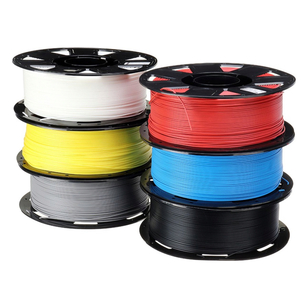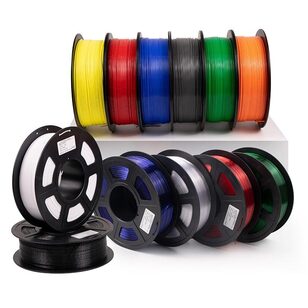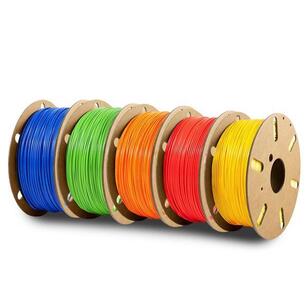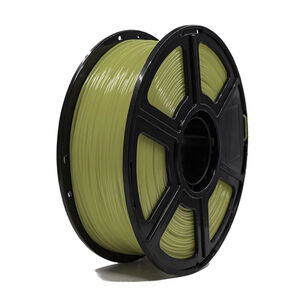The three most established 3D printing techniques for plastic parts are stereolithography (SLA), selective laser sintering (SLS) and fused deposition modeling (FDM). In the workshop I have a Prusa i3 MK3S+ 3D printer at my disposal. This uses the SLA technique and prints the objects by heating a thin plastic wire, the so-called filament. In addition to different colors, there are also several different types of filament. Each with its own specific properties and areas of application.

The abbreviation PLA stands for PolyLactic Acid, and this material is often used as an alternative to plastic. PolyLactic Acid is available in a variety of colors, but has a naturally translucent appearance. Color can be added by adding color pigments to the material.
PLA is made from starchy plants and is a thermoplastic. PLA is biodegradable and comes from corn plants, sugar cane or sugar beets, for example. This makes PLA a more environmentally friendly material than ABS, for example, which is manufactured from fossil fuels. Moreover, there is Recycled-, Reflow- or Reform-rPLA from recycled 3D printer filament. This material, and thus the final printed object, sometimes has a more matted surface than normal PLA.

The material of the well-known PET bottles. Polyethylene terephthalate glycol, known as PETG or PET-G, is a thermoplastic polyester that offers significant chemical resistance, durability and formability for manufacturing. PETG is an adaptation of PET (Polyethylene Terephthalate) where the 'G' stands for glycol, which is added at the molecular level to provide different chemical properties. PET uses the same monomers as glycol-modified PETG, but PETG is stronger and more durable, more impact resistant and better suited for higher temperatures.
The surface of PETG material is usually more shiny than PLA material, which more often has a satin sheen. Therefore, the PETG material is also more common for objects that must remain transparent or translucent.

TPE (Thermoplastic Elastomer) is a (somewhat) flexible and biodegradable filament based on PLA. It has the strength of PETG, the flexibility of TPC (thermoplastic copolyester). A variant is TPU (thermoplastic polyurethane). These materials are also called "Flex. They are somewhat flexible but not stretchy and quite stiff. Not comparable to soft rubber or elastic, but rather to the heel of your shoe.
By varying internal padding and wall thickness, different objects with varying flexibility can be printed. It is quite difficult to print so each object in practice requires several test models. It also requires experimentation with the print speed, which is why print times (and production costs) are usually a bit higher.

PVA is a generally transparent water-soluble filament for making removable support structures. Overhanging parts of the object to be printed can be supported during the printing process. Afterwards, this 'support' will then be removed.
However, PVA is relatively expensive and only of limited use with printers with only one print head because changing filaments during printing is expensive and time-consuming. Personally, I hardly use the material for this reason. All the more so because the necessary 'supporting construction' can usually just as easily be printed from the original printing material. My printer is able to cool this material slightly more when applying, so that it adheres less well to the final object and can therefore be easily removed afterwards.